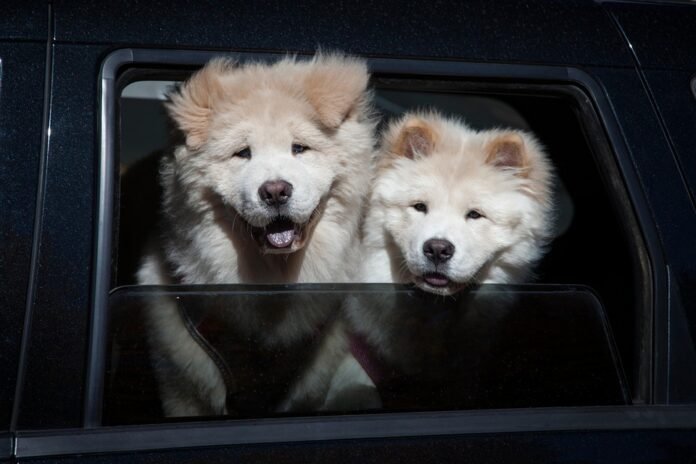Here is an article on how we can rewild the world, one ecosystem at a time.
Bringing Back the Wild: How We Can Rewild the World, One Ecosystem at a Time
For centuries, humanity has worked to tame the wild. We’ve straightened rivers, cleared forests, and built cities on ancient wetlands. But a new, powerful idea is taking root: what if, instead of taming nature, we learned to let it go? This is the promise of rewilding—a bold vision for ecological restoration that goes beyond traditional conservation to actively bring back nature’s own processes and create self-sustaining, wild ecosystems.
It’s not about turning the whole world into an untouched wilderness. It’s about strategically healing our planet, one ecosystem at a time. Rewilding is a message of hope, demonstrating that we can reverse ecological decline and build a richer, more resilient world for all species, including our own.
What is Rewilding, Really?
Rewilding isn’t just about planting trees or protecting a single species. It’s about restoring natural processes and letting nature take the lead. The philosophy rests on three core principles, often called the “three C’s”:
- Cores: Protecting and expanding core wild areas where nature can thrive without human interference.
- Corridors: Connecting these core areas so that wildlife can move, migrate, and maintain genetic diversity.
- Carnivores (and other Keystone Species): Reintroducing missing species that play a critical role in shaping their environment.
The ultimate goal is to restore “trophic cascades”—the powerful ripple effects that happen when a top predator or keystone species is returned to an ecosystem. By restoring these natural architects, we step back from micromanagement and allow the ecosystem to heal itself.
The Blueprint: A Step-by-Step Guide to Rewilding an Ecosystem
So how do we begin? The process is scalable, applicable to a vast national park, a neglected river system, or even a local nature reserve.
Step 1: Assess and Protect the Core
Before any rewilding can happen, we need a foundation. The first step is to identify and secure remnant pockets of wildness. This could be an old-growth forest fragment, a patch of untouched prairie, or a coastal saltmarsh. These “core areas” are the lifeboats for biodiversity. Protecting them legally and physically is the non-negotiable first move.
Step 2: Reconnect and Restore
Nature doesn’t recognize fences or highways. For ecosystems to be resilient, they need to be connected. This step focuses on creating wildlife corridors—green bridges that allow animals to roam freely between core habitats.
- On Land: This might involve building wildlife overpasses across busy roads, planting hedgerows to connect fragmented woodlands, or securing conservation easements on private land.
- In Water: It means removing obsolete dams to free rivers, allowing fish like salmon to complete their life cycles and restoring natural floodplains that act as sponges during heavy rains.
This is also the stage for active restoration. We can kickstart natural processes by planting native trees and wildflowers, re-meandering straightened streams, and re-wetting drained peatlands.
Step 3: Reintroduce the Drivers of Change
This is the most dynamic—and sometimes controversial—step. It involves reintroducing keystone species that have been lost from the landscape. These are the ecosystem engineers and regulators that drive profound change.
- Beavers: These “nature’s engineers” build dams that create wetlands, slow water flow, reduce flooding, and create habitats for countless other species, from dragonflies to otters.
- Large Herbivores: Grazers like bison or wild horses prevent forests from becoming monolithic, creating a mosaic of grasslands and woodlands that supports greater biodiversity.
- Apex Predators: Reintroducing predators like wolves or lynx keeps herbivore populations in check, preventing overgrazing and allowing vegetation to recover.
The reintroduction of wolves to Yellowstone National Park is the textbook example. Their presence changed elk behavior, which led to the recovery of aspen and willow trees, which in turn stabilized riverbanks and brought back songbirds and beavers. The wolves literally changed the course of rivers.
Rewilding in Action: From Parks to Backyards
Rewilding isn’t just a theory; it’s happening all over the world.
- Knepp Estate, UK: A failing 3,500-acre farm in West Sussex was handed back to nature. By introducing free-roaming cattle, pigs, and ponies as proxies for extinct megafauna, the owners sparked an explosion of life. It is now one of the UK’s most important havens for rare species like turtle doves and purple emperor butterflies.
- The Carpathian Mountains, Romania: This vast wilderness is home to Europe’s largest populations of brown bears, wolves, and lynx. Conservation efforts focus on maintaining connectivity across this mountain range, ensuring these iconic species have the space they need to thrive.
- Your Own Backyard: Rewilding can start small. By planting native wildflowers for pollinators, creating a small pond, avoiding pesticides, and leaving a corner of your garden to grow wild, you are creating a mini-corridor and a core habitat. You are participating in the great restoration.
The Human Place in a Wilder World
Rewilding is not about pushing people out. It’s about finding a new, more balanced relationship with the natural world. Restored ecosystems provide immense benefits to us: clean air and water, natural flood defenses, carbon sequestration, and incredible opportunities for recreation and tourism.
Success requires community buy-in, especially from farmers and landowners who manage the land. It means finding solutions for human-wildlife coexistence, such as using guard dogs to protect livestock from predators, and ensuring that local communities benefit economically from a wilder landscape.
Rewilding is an invitation to be ambitious. It asks us to look at a degraded landscape not as a lost cause, but as an opportunity. It is a practical, hopeful path forward in an age of ecological anxiety. It begins with one patch of earth, one restored riverbank, one act of letting go—and letting the wild return.

